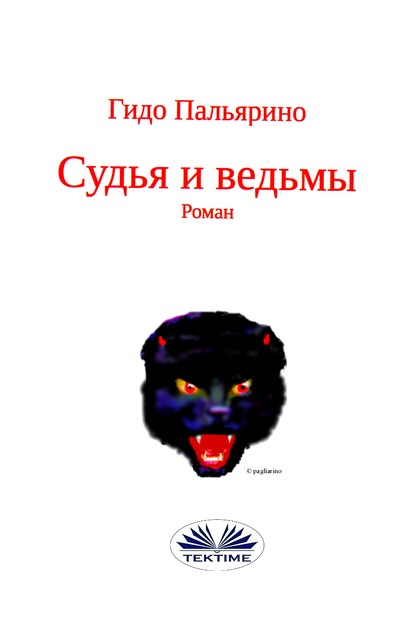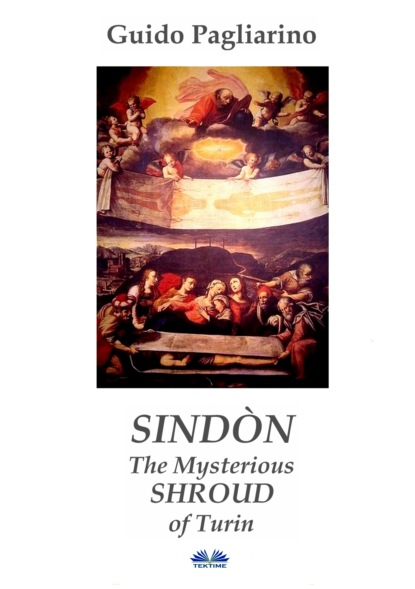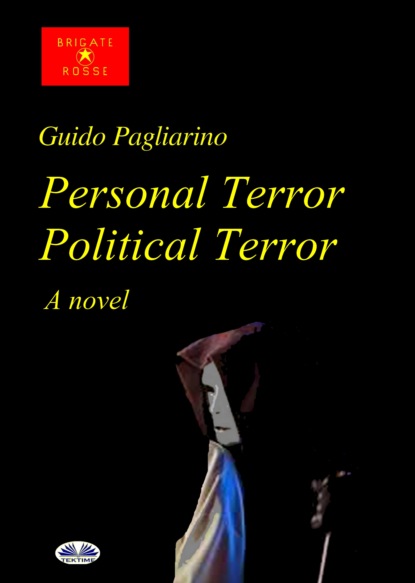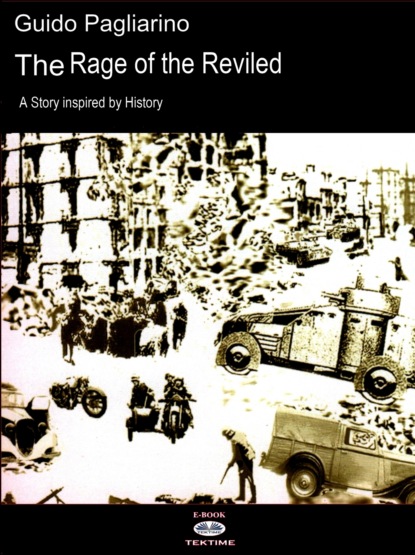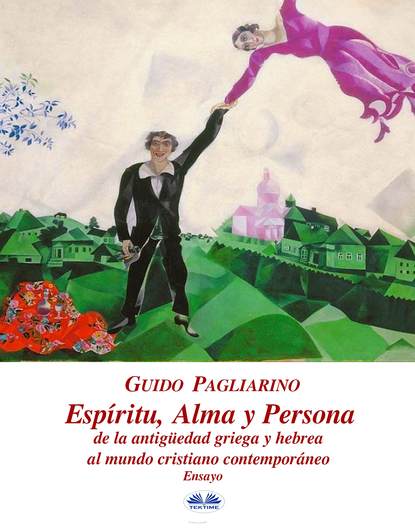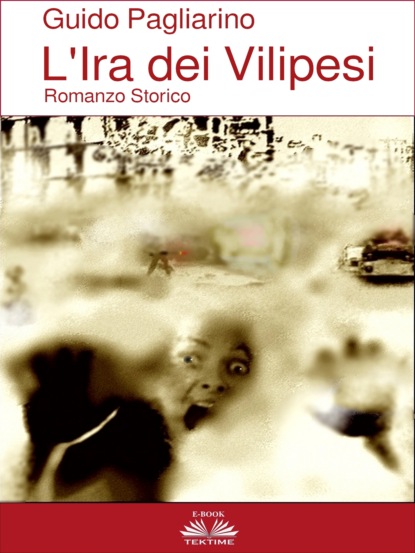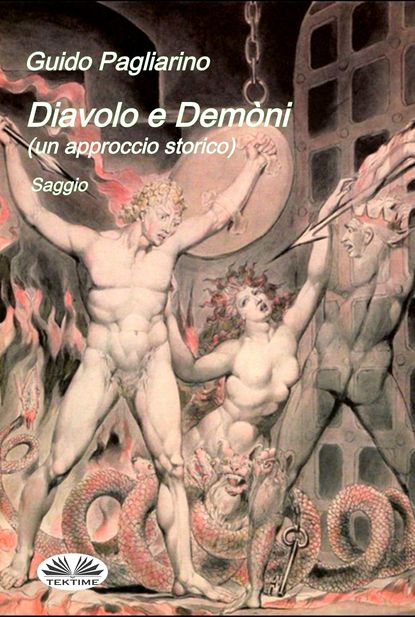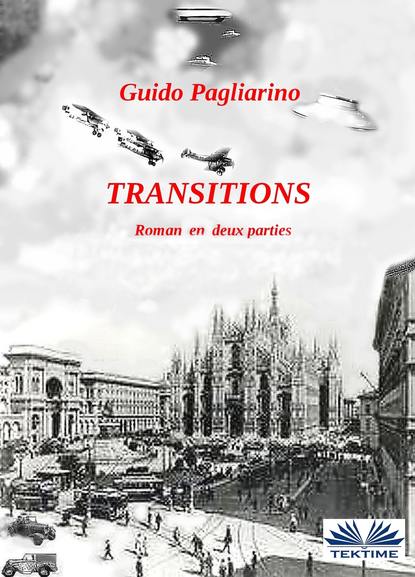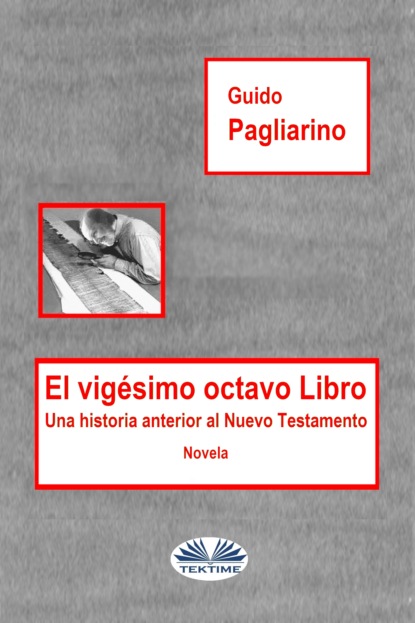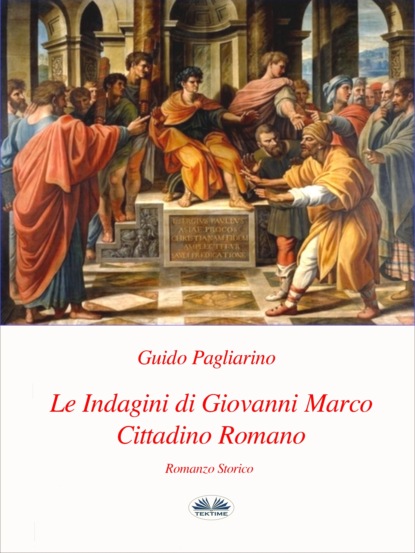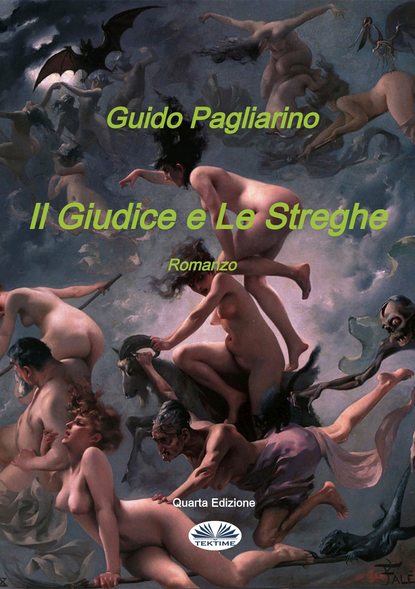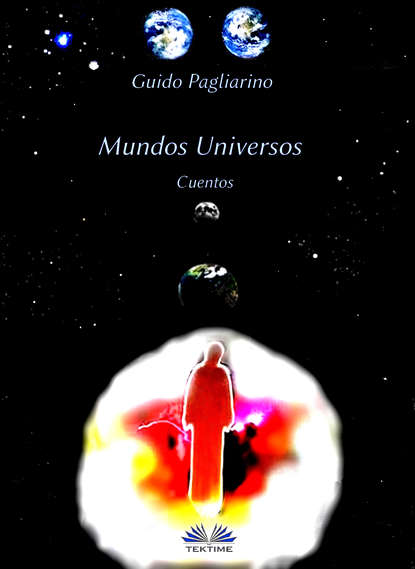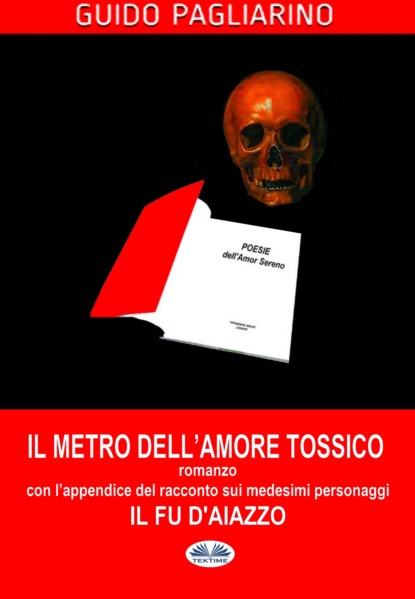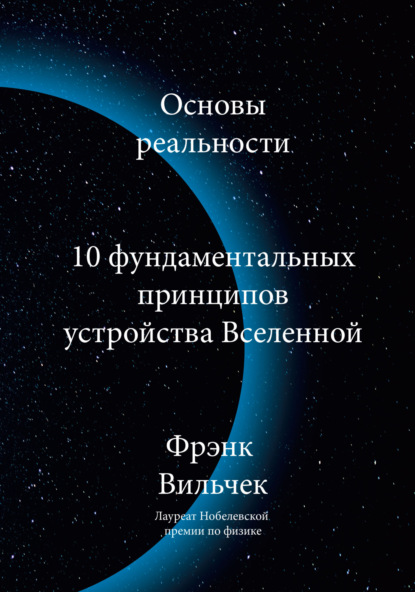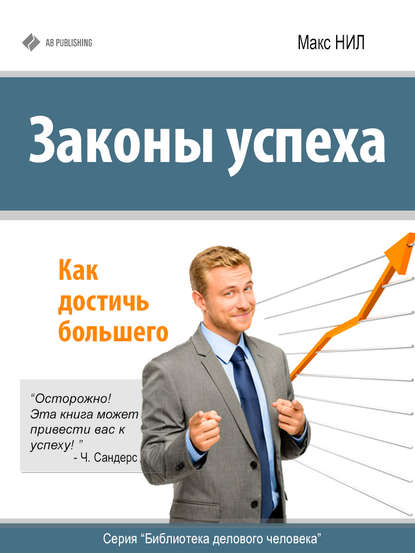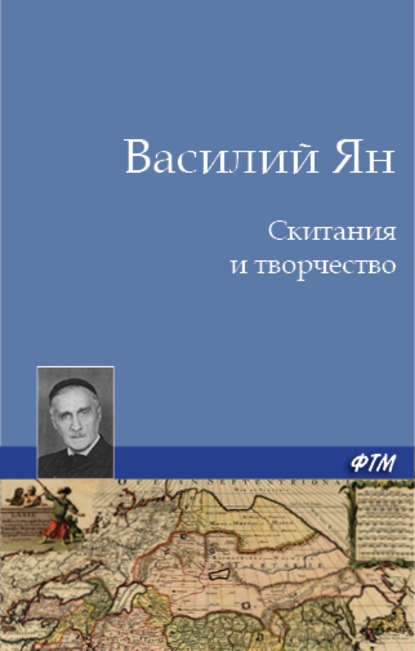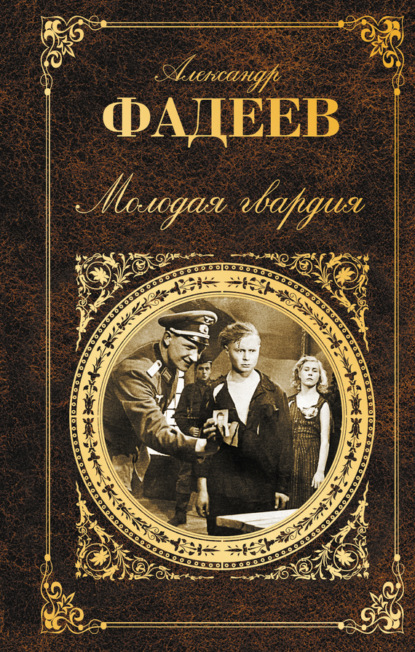Поиск:
Войти
Книги автора: Guido Pagliarino
Сортировка
В году 1530 Паоло Грилланди, папский судья, председатель мирского суда в Риме, ведет дознание об одн…
В году 1530 Паоло Грилланди, папский судья, председатель мирского суда в Риме, ведет дознание об одном туманном убийстве и гнусном похищении; по ходу следствия ему удается пролить свет на грязные делишки некоторых высокопоставленных особ, которые пристрастились к сатанизму, убийствам и самым зверским половым сношениям, и восстановить наконец справедливость, но и сам он порядком обжигается. Грязных негодяев, которые совершили не одно лишь, а целый ряд преступлений, по статьям закона тех времен он приговорит к смерти на костре, но все же долгим, опасным и не лишенным покушений на его жизнь окажется путь, который магистрату придется пройти, чтобы отыскать доказательства по делу. В то же время, благодаря личному опыту и некоторым встречам, происходит его обращение из безжалостного преследователя ведьм в человека, охваченного сомнениями и состраданием. В обстановке охоты на ведьм в эпоху Возрождения читатель, среди прочих эффектных сцен, столкнется с поединком на мечах с самим чертом. В году 1530 Паоло Грилланди, папский судья, председатель мирского суда в Риме, ведет дознание об одном туманном убийстве и гнусном похищении; по ходу следствия ему удается пролить свет на грязные делишки некоторых высокопоставленных особ, которые пристрастились к сатанизму, убийствам и самым зверским половым сношениям, и восстановить наконец справедливость, но и сам он порядком обжигается. Грязных негодяев, которые совершили не одно лишь, а целый ряд преступлений, по статьям закона тех времен он приговорит к смерти на костре, но все же долгим, опасным и не лишенным покушений на его жизнь окажется путь, который магистрату придется пройти, чтобы отыскать доказательства по делу. В то же время происходит его обращение из безжалостного преследователя ведьм в человека, охваченного сомнениями и состраданием, благодаря личному опыту и некоторым встречам, а в первую очередь благодаря молодому, высокообразованному епископу Микели, который в числе немногих священнослужителей в те времена борется с фанатизмом во имя любвеобильного Божьего благоразумия. В обстановке охоты на ведьм в эпоху Возрождения, помимо различных неожиданных поворотов событий вплоть до последних страниц, читатель, среди прочих эффектных сцен сюжета, столкнется с поединком на мечах с самим чертом, разграблением Рима, встретится с философами и магами-гностиками, рабами, разбойниками, святыми и бесноватыми в Италии, где уже близится Тридентский собор, стране, отличной от современной, и все же в какой-то мере похожей. Задействованы в этом романе историческом, но с детективным разворотом, величайшие персонажи вошедшие в большую Историю, а также персонажи менее известные, такие как адвокат Понцинибио, который выступал против жестокостей, применяемых как католической инквизицией, так и в протестантских религиозных судах, и личность которого намного предваряет личности таких противников смертной казни, как Беккария; вошли в роман и такие реальные персонажи, как бесноватый Балестрини, и наводящий ужас инквизитор доминиканец Спина. Да и сам главный герой Грилланди является исторической личностью, хотя на самом деле речь шла о фанатичном адвокате, преследователе ведьм, а не о папском судье. В числе вымышленных персонажей встречаем Мору, юную и покорную любовницу судьи, которая хранит страшные, будоражащие душу тайны, она не второстепенная героиня, поскольку именно она полностью раскрывать магистрату дело. Помимо нее также вымышленными персонажами являются двуличный кавалер Ринальди и приспешник ада князь Бьянкакроче, образ которого остается на втором плане и ни разу не выходит на первый план, как подобает великим кукловодам: это своего рода незримый главарь мафии, который сделал своим замом действующего в открытую Ринальди. Епископ Микели – тоже вымышленный герой, но он вобрал в себя образы высокопоставленных священнослужителей, которые существовали на самом деле: Поул, Садолето и Мороне; инквизиция обвинила их в ереси, так как они проповедовали евангельское милосердие против жестокостей инквизиторов; также вымышленными являются персонажи священника (приходского) из Гроттаферраты, наемного убийцы Тралло, фехтовальщика Фуэнтеса Виллаты, главаря разбойников и брата Мариетты, судьи Салати и лейтенанта Риссони. В романе отражается менталитет XVI века, ведь, как известно историкам, когда мы заглядываем в прошлое, надо как можно тщательнее устранить современное восприятие, иначе есть опасность вынести не исторические суждения; например, смертная казнь сегодня, как правило, считается вещью ужасной, а в XVI веке она воспринималась как наказание бесспорное, и полагали, что раскаявшийся убийца смертью искупает все свои грехи и таким образом возносится в рай; вот почему один из персонажей, епископ Микели, хотя и является он идеалистом, не достигает отрицания смертных приговоров за убийство, более того, он одобряет сожжение на костре, к которому судья Грилланди приговаривает раскрытую и арестованную сатанинскую преступную группу в конце романа.
В году 1530 Паоло Грилланди, папский судья, председатель мирского суда в Риме, ведет дознание об одн…
В году 1530 Паоло Грилланди, папский судья, председатель мирского суда в Риме, ведет дознание об одном туманном убийстве и гнусном похищении; по ходу следствия ему удается пролить свет на грязные делишки некоторых высокопоставленных особ, которые пристрастились к сатанизму, убийствам и самым зверским половым сношениям, и восстановить наконец справедливость, но и сам он порядком обжигается. Грязных негодяев, которые совершили не одно лишь, а целый ряд преступлений, по статьям закона тех времен он приговорит к смерти на костре, но все же долгим, опасным и не лишенным покушений на его жизнь окажется путь, который магистрату придется пройти, чтобы отыскать доказательства по делу. В то же время, благодаря личному опыту и некоторым встречам, происходит его обращение из безжалостного преследователя ведьм в человека, охваченного сомнениями и состраданием. В обстановке охоты на ведьм в эпоху Возрождения читатель, среди прочих эффектных сцен, столкнется с поединком на мечах с самим чертом. В году 1530 Паоло Грилланди, папский судья, председатель мирского суда в Риме, ведет дознание об одном туманном убийстве и гнусном похищении; по ходу следствия ему удается пролить свет на грязные делишки некоторых высокопоставленных особ, которые пристрастились к сатанизму, убийствам и самым зверским половым сношениям, и восстановить наконец справедливость, но и сам он порядком обжигается. Грязных негодяев, которые совершили не одно лишь, а целый ряд преступлений, по статьям закона тех времен он приговорит к смерти на костре, но все же долгим, опасным и не лишенным покушений на его жизнь окажется путь, который магистрату придется пройти, чтобы отыскать доказательства по делу. В то же время происходит его обращение из безжалостного преследователя ведьм в человека, охваченного сомнениями и состраданием, благодаря личному опыту и некоторым встречам, а в первую очередь благодаря молодому, высокообразованному епископу Микели, который в числе немногих священнослужителей в те времена борется с фанатизмом во имя любвеобильного Божьего благоразумия. В обстановке охоты на ведьм в эпоху Возрождения, помимо различных неожиданных поворотов событий вплоть до последних страниц, читатель, среди прочих эффектных сцен сюжета, столкнется с поединком на мечах с самим чертом, разграблением Рима, встретится с философами и магами-гностиками, рабами, разбойниками, святыми и бесноватыми в Италии, где уже близится Тридентский собор, стране, отличной от современной, и все же в какой-то мере похожей. Задействованы в этом романе историческом, но с детективным разворотом, величайшие персонажи вошедшие в большую Историю, а также персонажи менее известные, такие как адвокат Понцинибио, который выступал против жестокостей, применяемых как католической инквизицией, так и в протестантских религиозных судах, и личность которого намного предваряет личности таких противников смертной казни, как Беккария; вошли в роман и такие реальные персонажи, как бесноватый Балестрини, и наводящий ужас инквизитор доминиканец Спина. Да и сам главный герой Грилланди является исторической личностью, хотя на самом деле речь шла о фанатичном адвокате, преследователе ведьм, а не о папском судье. В числе вымышленных персонажей встречаем Мору, юную и покорную любовницу судьи, которая хранит страшные, будоражащие душу тайны, она не второстепенная героиня, поскольку именно она полностью раскрывать магистрату дело. Помимо нее также вымышленными персонажами являются двуличный кавалер Ринальди и приспешник ада князь Бьянкакроче, образ которого остается на втором плане и ни разу не выходит на первый план, как подобает великим кукловодам: это своего рода незримый главарь мафии, который сделал своим замом действующего в открытую Ринальди. Епископ Микели – тоже вымышленный герой, но он вобрал в себя образы высокопоставленных священнослужителей, которые существовали на самом деле: Поул, Садолето и Мороне; инквизиция обвинила их в ереси, так как они проповедовали евангельское милосердие против жестокостей инквизиторов; также вымышленными являются персонажи священника (приходского) из Гроттаферраты, наемного убийцы Тралло, фехтовальщика Фуэнтеса Виллаты, главаря разбойников и брата Мариетты, судьи Салати и лейтенанта Риссони. В романе отражается менталитет XVI века, ведь, как известно историкам, когда мы заглядываем в прошлое, надо как можно тщательнее устранить современное восприятие, иначе есть опасность вынести не исторические суждения; например, смертная казнь сегодня, как правило, считается вещью ужасной, а в XVI веке она воспринималась как наказание бесспорное, и полагали, что раскаявшийся убийца смертью искупает все свои грехи и таким образом возносится в рай; вот почему один из персонажей, епископ Микели, хотя и является он идеалистом, не достигает отрицания смертных приговоров за убийство, более того, он одобряет сожжение на костре, к которому судья Грилланди приговаривает раскрытую и арестованную сатанинскую преступную группу в конце романа.
This essay divulges what the research has established about the famous Shroud of Turin, and it is no…
This essay divulges what the research has established about the famous Shroud of Turin, and it is not intended to persuade to believe that the Cloth of Turin really wrapped the body of Christ a couple of thousands year ago.
The author returns several times to certain subjects, according to different perspectives: the reader does not consider such reiterations as not necessary and involuntary: the work includes a general introductory part – at some point, considering it useful, already with in-depth studies, as for the medical conclusions of the anatomopathologist Pierluigi Baima Bollone – and a section, divided into chapters, specifically dealing with particular topics already covered in the first part, for example the photographs of the Shroud, and a chronology.
This essay has been updated several times by the author.
The essay is not intended to persuade to believe that the Sheet of Turin has really wrapped the body of Christ a couple of thousand years ago or, as commonly said, that it is authentic-
On the other hand, authenticity can also mean something else, you can say the Shroud preserved in Turin is the Cloth that wrapped body of Christ, but it could be different than simply assume that an item is two thousand years old; and if I do not take a position on the fact that this famous Sheet wrapped Jesus, I suppose that the reasons for thinking that the Shroud is very ancient are prevailing, as there are currently lots of evidence to support it and only two against, of which only one seems objectively to be considered: the radiodating tests on Shroud samples which determined the age of the Sheet at lower medieval period; but they are increasingly disputed by Christian experts, scientifically and not only. The other reason against the Shroud is a prejudice, that comes both from anticlerical laity
and from the majority of the Christians Reformed, preclusion that leads the first to ignore the theme, and sometime to mock it; and leads the Protestant believers to condemn the veneration of the Shroud, which they consider to be a mere ”symbol” created by human hands: they follow the Old Testament condemnation of ”make for yourself images”, historically born for anti-idolatrous reasons, although Catholics argue that the prohibition existed only before God was incarnated in Jesus, showing himself to the world as ”image”, that is as carnal human figure, without any possibility to be confused with graven images; there are, moreover, Catholics who deny authenticity, in the sense that the Shroud isn't precisely the one that wrapped Jesus , and you can find Protestants which assume it is authentic, at least in the second sense of the term or even in the first. In any case, it should be stressed that the Christian faith is not based on the Shroud of Turin but, historically, on the oral witness of the Apostles on Christ’s resurrection, gathered within the first century in the books of the New Testament and come down to us because it was preserved by the Church over the centuries, with systematic control of matching between the new copies and the previous ones, starting with the oldest.
With this spirit comes the second edition of the essay of Guido Pagliarino on the Shroud, , carried out considering new data and correcting a couple of inaccuracies in the book released years ago
The author returns several times to certain subjects, according to different perspectives: the reader does not consider such reiterations as not necessary and involuntary: the work includes a general introductory part – at some point, considering it useful, already with in-depth studies, as for the medical conclusions of the anatomopathologist Pierluigi Baima Bollone – and a section, divided into chapters, specifically dealing with particular topics already covered in the first part, for example the photographs of the Shroud, and a chronology.
This essay divulges what the research has established about the famous Shroud of Turin, and it is no…
This essay divulges what the research has established about the famous Shroud of Turin, and it is not intended to persuade to believe that the Cloth of Turin really wrapped the body of Christ a couple of thousands year ago.
The author returns several times to certain subjects, according to different perspectives: the reader does not consider such reiterations as not necessary and involuntary: the work includes a general introductory part – at some point, considering it useful, already with in-depth studies, as for the medical conclusions of the anatomopathologist Pierluigi Baima Bollone – and a section, divided into chapters, specifically dealing with particular topics already covered in the first part, for example the photographs of the Shroud, and a chronology.
This essay has been updated several times by the author.
The essay is not intended to persuade to believe that the Sheet of Turin has really wrapped the body of Christ a couple of thousand years ago or, as commonly said, that it is authentic-
On the other hand, authenticity can also mean something else, you can say the Shroud preserved in Turin is the Cloth that wrapped body of Christ, but it could be different than simply assume that an item is two thousand years old; and if I do not take a position on the fact that this famous Sheet wrapped Jesus, I suppose that the reasons for thinking that the Shroud is very ancient are prevailing, as there are currently lots of evidence to support it and only two against, of which only one seems objectively to be considered: the radiodating tests on Shroud samples which determined the age of the Sheet at lower medieval period; but they are increasingly disputed by Christian experts, scientifically and not only. The other reason against the Shroud is a prejudice, that comes both from anticlerical laity
and from the majority of the Christians Reformed, preclusion that leads the first to ignore the theme, and sometime to mock it; and leads the Protestant believers to condemn the veneration of the Shroud, which they consider to be a mere ”symbol” created by human hands: they follow the Old Testament condemnation of ”make for yourself images”, historically born for anti-idolatrous reasons, although Catholics argue that the prohibition existed only before God was incarnated in Jesus, showing himself to the world as ”image”, that is as carnal human figure, without any possibility to be confused with graven images; there are, moreover, Catholics who deny authenticity, in the sense that the Shroud isn't precisely the one that wrapped Jesus , and you can find Protestants which assume it is authentic, at least in the second sense of the term or even in the first. In any case, it should be stressed that the Christian faith is not based on the Shroud of Turin but, historically, on the oral witness of the Apostles on Christ’s resurrection, gathered within the first century in the books of the New Testament and come down to us because it was preserved by the Church over the centuries, with systematic control of matching between the new copies and the previous ones, starting with the oldest.
With this spirit comes the second edition of the essay of Guido Pagliarino on the Shroud, , carried out considering new data and correcting a couple of inaccuracies in the book released years ago
The author returns several times to certain subjects, according to different perspectives: the reader does not consider such reiterations as not necessary and involuntary: the work includes a general introductory part – at some point, considering it useful, already with in-depth studies, as for the medical conclusions of the anatomopathologist Pierluigi Baima Bollone – and a section, divided into chapters, specifically dealing with particular topics already covered in the first part, for example the photographs of the Shroud, and a chronology.
In the year 2000 the elderly emeritus police commissioner D'Aiazzo, is working alongside Commissione…
In the year 2000 the elderly emeritus police commissioner D'Aiazzo, is working alongside Commissioner Sordi, his former employee, as a consultant at the Police Headquarters in Turin. He is investigating a series of murders that seem to be the anarchic work of a sadistic serial killer or people sacrifices to the devil of one of the sulfurous sects in the macabre-obsessed Turin. But it could also or only have elements related to the brand of terrorism that had raged in Italy until about twenty years beforehand and still drags on into the end of the millennium. The monster suppresses his victims in a horrendous way, pushing the murder weapon into an ear until it reaches the brain and kills them. The investigation unfolds through disturbing suspicions, identity crises, psychological annotations, and reaches its conclusive acme in the unsettling final revelation, which has the death of the police commissioner himself, as the very consequence of his discovery of the culprit as its addendum.
In the year 2000 the elderly police commissioner emeritus Vittorio D'Aiazzo is working alongside commissioner Sordi, his former employee, as a consultant to the Turin Police Headquarters. They are investigating a series of murders that appear to be the anarchic work of a sadistic serial killer or
sacrifices to the devil by one of the sulfurous sects of macabre-obsessed Turin. But they may also, or only, have roots related to the terrorism that had raged in Italy until twenty years earlier and is still dragging on at the end of the millennium. The monster suppresses his victims horrendously by sticking the murder weapon into an ear until it reaches the brain, with lethal results. The investigation touches on private issues and moves forward through a motley group of humanity that is not entirely morally transparent. But it also touches on the political, economic, and social themes typical of the 1970s during the so-called anni di piombo (years of terrorism), when political and private violence normally ended up being mixed with the disappearance, or almost, of the concept of the person and the prevalence of social roles. Vittorio D'Aiazzo's investigation winds its way through the evil fruits of those perverse seeds, amid disturbing conjectures, identity crises, psychological annotations, and reaches its crucial acme in the unsettling final revelation which has as an addendum the death of the commissioner himself, resulting from the discovery of the culprit.
September 26, 1943. Naples is on the verge of rebelling against the occupying Germans. Rosa, a prost…
September 26, 1943. Naples is on the verge of rebelling against the occupying Germans. Rosa, a prostitute and black marketer, a confidant of the Fascist political police, is killed violently. Her alleged murderer, Gennaro, is detained and questioned in vain by a still inexperienced deputy commissioner, Vittorio. Shortly after, the insurrection that will go down in history as The Four Days of Naples erupts. The deputy commissioner and Rosa’s alleged murderer, strangely set free by the commissioner himself, join in. Young Mariapia who has been gang raped by the German side, also takes part in the fight, yearning for revenge. Gennaro soon turns out to be related to her. Another murder takes place, and this time the target is a tobacconist who is also related to Mariapia.
Historical social fresco with crime elements set in Naples mainly in 1943, during those Four Days in which the city, by itself, got rid of the Nazi occupier. There is an abstract actor, indeed the protagonist, alongside the real-life characters, fury, both the collective wrath that erupts on the field of battle and has as its corollary, on the victorious side, rapes and other bestiality, and the anger that is expressed in the rebellion against personal abuses that go unpunished by the authority and are now unbearable.
If an oppressed people can rebel in its own right and rise up and if, as even St Thomas Aquinas admitted, murder of the tyrant is permitted when there is no other way to regain the freedom that God himself has granted the human being, is it lawful or not to kill a criminal that justice cannot reach and strike, who continues to vex, exploit and kill others inside his own neighborhood? Is someone with no other possible defense, and who resorts to extreme defense guilty? And, if so, to what extent? This is the private dilemma that runs through the novel as it traverses the public story of Naples’ rebellion against the Germans.
The scene opens on the violent death of Rosa, a wealthy prostitute and black marketer, a former confidant of the Fascist political police. Gennaro, her alleged murderer, is detained and questioned in vain by a still inexperienced deputy commissioner, Vittorio D'Aiazzo. Very soon after, on September 26, 1943, the insurrection that will go down in history as The Four Days of Naples flares up. The deputy commissioner himself and, strangely, having been freed by the chief commissioner himself, Rosa’s alleged murderer, also join it. Another participant in the battle is the young Mariapia who, having been gang raped by the Germans, yearns for revenge. At some point during the story, Gennaro turns out to be related to her.
During the clashes another murder takes place which, at least apparently, like the death of the prostitute, is not related to the revolt. The victim is a tobacconist, Mariapia's cousin, slaughtered by someone while he was defecating, and who then cut off his testicles. At a certain point the two deaths seem to be connected, because the deceased were not only both linked to the Camorra, but also to the office of American military secret services, the O.S.S. Several characters enter the scene between the various battles, such as young Mariapia’s parents, her paratrooper brother already reported missing in El Alamein but who reappears alive and very active, the willing anatomopathologist Palombella, the fat and phlegmatic warrant officer Branduardi, the valiant deputy commissioner Bollati and, a secondary but fundamental character, the elderly bike repairman Gennarino Appalle, who discovers the tobacconist’s corpse and, at the end of a clash between insurgents and German SS in the street in front of his shop, goes out onto the road and, breathless, alerts deputy commissioner D'Aiazzo who took part in the clash together with his adjutant, the impetuous Brigadier Bordin. The tobacconist had been a foul person, once a batterer for the Camorra, and
Translator: Barbara Maher
In the year 2000 the elderly emeritus police commissioner D'Aiazzo, is working alongside Commissione…
In the year 2000 the elderly emeritus police commissioner D'Aiazzo, is working alongside Commissioner Sordi, his former employee, as a consultant at the Police Headquarters in Turin. He is investigating a series of murders that seem to be the anarchic work of a sadistic serial killer or people sacrifices to the devil of one of the sulfurous sects in the macabre-obsessed Turin. But it could also or only have elements related to the brand of terrorism that had raged in Italy until about twenty years beforehand and still drags on into the end of the millennium. The monster suppresses his victims in a horrendous way, pushing the murder weapon into an ear until it reaches the brain and kills them. The investigation unfolds through disturbing suspicions, identity crises, psychological annotations, and reaches its conclusive acme in the unsettling final revelation, which has the death of the police commissioner himself, as the very consequence of his discovery of the culprit as its addendum.
In the year 2000 the elderly police commissioner emeritus Vittorio D'Aiazzo is working alongside commissioner Sordi, his former employee, as a consultant to the Turin Police Headquarters. They are investigating a series of murders that appear to be the anarchic work of a sadistic serial killer or
sacrifices to the devil by one of the sulfurous sects of macabre-obsessed Turin. But they may also, or only, have roots related to the terrorism that had raged in Italy until twenty years earlier and is still dragging on at the end of the millennium. The monster suppresses his victims horrendously by sticking the murder weapon into an ear until it reaches the brain, with lethal results. The investigation touches on private issues and moves forward through a motley group of humanity that is not entirely morally transparent. But it also touches on the political, economic, and social themes typical of the 1970s during the so-called anni di piombo (years of terrorism), when political and private violence normally ended up being mixed with the disappearance, or almost, of the concept of the person and the prevalence of social roles. Vittorio D'Aiazzo's investigation winds its way through the evil fruits of those perverse seeds, amid disturbing conjectures, identity crises, psychological annotations, and reaches its crucial acme in the unsettling final revelation which has as an addendum the death of the commissioner himself, resulting from the discovery of the culprit.
September 26, 1943. Naples is on the verge of rebelling against the occupying Germans. Rosa, a prost…
September 26, 1943. Naples is on the verge of rebelling against the occupying Germans. Rosa, a prostitute and black marketer, a confidant of the Fascist political police, is killed violently. Her alleged murderer, Gennaro, is detained and questioned in vain by a still inexperienced deputy commissioner, Vittorio. Shortly after, the insurrection that will go down in history as The Four Days of Naples erupts. The deputy commissioner and Rosa’s alleged murderer, strangely set free by the commissioner himself, join in. Young Mariapia who has been gang raped by the German side, also takes part in the fight, yearning for revenge. Gennaro soon turns out to be related to her. Another murder takes place, and this time the target is a tobacconist who is also related to Mariapia.
Historical social fresco with crime elements set in Naples mainly in 1943, during those Four Days in which the city, by itself, got rid of the Nazi occupier. There is an abstract actor, indeed the protagonist, alongside the real-life characters, fury, both the collective wrath that erupts on the field of battle and has as its corollary, on the victorious side, rapes and other bestiality, and the anger that is expressed in the rebellion against personal abuses that go unpunished by the authority and are now unbearable.
If an oppressed people can rebel in its own right and rise up and if, as even St Thomas Aquinas admitted, murder of the tyrant is permitted when there is no other way to regain the freedom that God himself has granted the human being, is it lawful or not to kill a criminal that justice cannot reach and strike, who continues to vex, exploit and kill others inside his own neighborhood? Is someone with no other possible defense, and who resorts to extreme defense guilty? And, if so, to what extent? This is the private dilemma that runs through the novel as it traverses the public story of Naples’ rebellion against the Germans.
The scene opens on the violent death of Rosa, a wealthy prostitute and black marketer, a former confidant of the Fascist political police. Gennaro, her alleged murderer, is detained and questioned in vain by a still inexperienced deputy commissioner, Vittorio D'Aiazzo. Very soon after, on September 26, 1943, the insurrection that will go down in history as The Four Days of Naples flares up. The deputy commissioner himself and, strangely, having been freed by the chief commissioner himself, Rosa’s alleged murderer, also join it. Another participant in the battle is the young Mariapia who, having been gang raped by the Germans, yearns for revenge. At some point during the story, Gennaro turns out to be related to her.
During the clashes another murder takes place which, at least apparently, like the death of the prostitute, is not related to the revolt. The victim is a tobacconist, Mariapia's cousin, slaughtered by someone while he was defecating, and who then cut off his testicles. At a certain point the two deaths seem to be connected, because the deceased were not only both linked to the Camorra, but also to the office of American military secret services, the O.S.S. Several characters enter the scene between the various battles, such as young Mariapia’s parents, her paratrooper brother already reported missing in El Alamein but who reappears alive and very active, the willing anatomopathologist Palombella, the fat and phlegmatic warrant officer Branduardi, the valiant deputy commissioner Bollati and, a secondary but fundamental character, the elderly bike repairman Gennarino Appalle, who discovers the tobacconist’s corpse and, at the end of a clash between insurgents and German SS in the street in front of his shop, goes out onto the road and, breathless, alerts deputy commissioner D'Aiazzo who took part in the clash together with his adjutant, the impetuous Brigadier Bordin. The tobacconist had been a foul person, once a batterer for the Camorra, and
Translator: Barbara Maher
Добавлено
Год выхода: 2019
Язык: Итальянский
Le parole anima e animo non hanno, sempre e comunque, lo stesso significato e nemmeno riguardano, in…
Le parole anima e animo non hanno, sempre e comunque, lo stesso significato e nemmeno riguardano, in ogni caso, le medesime sfere – umana e divina. Questo saggio è un excursus divulgativo sui concetti di anima, animo e persona presso il Giudaismo antico, la filosofia platonica, aristotelica e neoplatonica, il Cristianesimo delle origini e quello ellenizzato.
Le parole anima e animo non hanno, sempre e comunque, lo stesso significato e nemmeno riguardano, in ogni caso, le medesime sfere – umana e divina. Questo saggio è un excursus divulgativo sui concetti di anima, animo e persona presso il Giudaismo antico, la filosofia platonica, aristotelica e neoplatonica, il Cristianesimo delle origini e quello ellenizzato. Nella prima parte dell'opera sono trattate le idee di spirito-animo e di anima-psiche secondo il pensiero greco antico, in particolare quello di Platone, Aristotele e Plotino, filosofi che influirono sul sentire cristiano e, in generale, sulle dottrine occidentali. L'appello alla Grecia da parte cristiana ebbe storicamente uno scopo contingente, evangelizzare greci e romani e controbattere le eresie gnostica e manichea; però il Cristianesimo non si spogliò più di quel manto culturale, l'ellenizzazione della dottrina cristiana rimase permanente, pur non essendo il Dio neotestamentario, o non essendo soltanto, il Bene assoluto di Platone o la Migliore delle sostanze d’Aristotele o l’Uno ineffabile e superiore all’essere di Plotino, ma un Ente peculiare. D'altro canto, la filosofia greca non è del tutto estranea alla Bibbia, al di là dell'idea non biblica di anima spirituale immortale; sotto altri aspetti l’incontro fra il pensiero ellenico e la Bibbia precedette i libri del Nuovo Testamento e di già influì sugli ultimi dell’Antico, scritti fra II e I secolo a.C.: fu in conseguenza della conquista macedone di Palestina ed Egitto, Paese questo che fu luogo di traduzione dall'ebraico al greco del Primo Testamento e della formazione di alcuni degli ultimi suoi testi – considerati peraltro apocrifi dai protestanti –, alcuni dei quali, verosimilmente, furono stesi direttamente in greco. La fusione tra pensiero ellenico e messaggio biblico non fu dunque una semplice coincidenza. Nella seconda parte dell'opera si discorre di persona, in anima e corpo, e di spirito secondo il Giudaismo farisaico e il Cristianesimo. Per la teologia cristiana i concetti di anima, corpo e animo – o spirito – coesistono in un solo Ente quali suoi attributi personali, cioè solo in Dio; non così è per l'essere umano, che è persona composta da anima e corpo, pur essendo sì presente in lei lo spirito, ma non suo personale, bensì lo Spirito di Dio stesso. A differenza che nel credo cristiano, nelle altre religioni monoteiste Dio è solo Spirito, non ha anche l'anima umana e men che mai un corpo, in altre parole egli non è, come invece il Dio cristiano nel suo stesso immutabile Essere eterno, pure uomo in corpo e anima, peraltro in forma gloriosa spirituale, non materiale, non ha cioè due coscienze, una divina e una umana: non è vero che ”tutti i credi religiosi, in fondo, s’equivalgono”, ma molte persone non hanno ben presenti le distinzioni predette e considerano anche il Dio del Nuovo Testamento come una figura solo divina, eterna, onnipotente, onnisciente, analoga alla divinità non trinitaria degli altri monoteismi.
Indice:
Breve introduzione dell'autore
Prima parte: SU CORPO E ANIMA NELLA FILOSOFIA GRECA
L’anima nella Grecia più antica: cenni
L’anima e Socrate
L’anima secondo Platone
L’anima secondo Aristotele
L’anima per lo Stoicismo
L’anima secondo Plotino
In sintesi: spirito, corpo e anima, dualità greca e gnostica
Tavola fuori testo – Schema minimo degl’influssi filosofici sulla teologia cristiana antica e medievale
Seconda parte: SU CORPO E ANIMA NEL GIUDAISMO E NEL CRISTIANESIMO
Corpo e anima: unitarietà ebraica e cristiana – personalismo –
Giudaismo, Cristianesimo e Logos
Sull’anima nel Cristianesimo dal II secolo
Agostino cerniera fra Platonismo e Cristianesimo
Cenni al platonismo cristiano dopo Agostino
Tommaso d’Aquino fra Rivelazione, Aristotelismo e Platonismo
Su corpo e anima oggi
Добавлено
Год выхода: 2019
Язык: es
Las palabras ánima y ánimo no tienen, siempre y en todo caso, el mismo significado ni tampoco perten…
Las palabras ánima y ánimo no tienen, siempre y en todo caso, el mismo significado ni tampoco pertenecen siempre a las mismas esferas: la humana y la divina. Este ensayo es un excurso divulgativo sobre conceptos del ánima (o alma), el ánimo y las personas en el judaísmo antiguo, las filosofías platónica, aristotélica y neoplatónica, el cristianismo original y el helenizado.
Las palabras ánima y ánimo no tienen, siempre y en todo caso, el mismo significado ni tampoco pertenecen siempre a las mismas esferas: la humana y la divina. Este ensayo es un excurso divulgativo sobre conceptos del ánima (o alma), el ánimo y las personas en el judaísmo antiguo, las filosofías platónica, aristotélica y neoplatónica, el cristianismo original y el helenizado. En la primera parte de la obra se tratan las ideas del espíritu-ánimo y de la psique-ánima según el pensamiento griego antiguo, en particular el de Platón, Aristóteles y Plotino, filósofos que influyeron en el sentir cristiano y, en general, sobre las doctrinas occidentales. La apelación a Grecia por parte cristiana tuvo, en general una finalidad contingente de evangelizar a griegos y romanos y rebatir las herejías gnóstica y maniquea. Pero el cristianismo no se despojó nunca de ese manto cultural, la helenización de la doctrina cristiana se hizo permanente, no siendo sin embargo el Dios neotestamentario, ni tampoco el Bien absoluto de Platón, ni la Mejor de las sustancias de Aristóteles, ni el Uno inefable y superior del ser de Pltino, sino un Ente particular. Por otro lado, la filosofía griega no es del todo extraña para la Biblia, más allá de la idea no bíblica del ánima espiritual inmortal. Entre otros aspectos, el encuentro entre el pensamiento helénico y la Biblia preceden a los libros del Nuevo Testamento y ya influyeron en los últimos del Antiguo, escritos entre los siglos II y I aC: fue como consecuencia de la conquista macedonia de Palestina y Egipto, países que fueron luego lugares de traducción del hebrero al griego del Primer Testamento y de formación de algunos de sus últimos textos (considerados por cierto como apócrifos por los protestantes), algunos de los cuales es posible que se escribieran directamente en griego. La fusión entre pensamiento griego y mensaje bíblico no fue por tanto una simple coincidencia. La segunda parte de la obra trata sobre la persona, en cuerpo y alma, según el judaísmo farisaico y el cristianismo. Para la teología cristiana, los conceptos de cuerpo, alma y ánimo (o espíritu) coexisten solo en un Ente como sus atributos personales, es decir, solo en Dios; no es así para el ser humano, que es una persona compuesta por cuerpo y alma, aunque en él está también presente el espíritu, pero no el suyo personal, sino el Espíritu del propio Dios. A diferencia del credo cristiano, en las demás religiones monoteístas Dios es solo Espíritu, no tiene también el alma humana ni menos un cuerpo; en otras palabras, no es, como el Dios cristiano en su mismo inmutable Ser eterno, también hombre en cuerpo y alma, sino una forma gloriosa espiritual, no material. No tiene, por tanto, dos conciencias, una divina y otra humana: no es verdad que “todas las religiones, en el fondo, son iguales”, sino que muchas personas no tienen presentes las distinciones anteriores y consideran también al Dios del Nuevo Testamento como una figura solo divina, eterna, omnipotente, equivalente a la divinidad no trinitaria de los demás monoteísmos.
Primera parte: SOBRE EL CUERPO Y EL ALMA EN LA FILOSOFÍA GRIEGA
El alma en la Grecia antigua: menciones
El alma y Sócrates
El alma según platón
El alma según Aristóteles
El alma para el estoicismo
El alma según Plotino
Resumen: espíritu, cuerpo y alma, dualidad griega y gnóstica
Gráfico aparte del texto – Esquema mínimo de las influencias filosóficas sobre la teología cristiana antigua y medieval
Segunda parte: SOBRE EL CUERPO Y EL ALMA EN EL JUDAÍSMO Y EN EL CRISTIANISMO
Cuerpo y alma: anima: unidad judía y cristiana (personalismo)
Judaísmo, cristianismo y logos
Sobre el alma en el cristianismo del siglo II
San Agustín, enlace entre el platonismo y el cristianismo
Menciones al platonismo cristiano después de San Agustín
Santo Tomás de Aquino, entre revelación, aristotelismo y platonismo
Sobre el cuerpo y el alma hoy
26 settembre 1943, Napoli è sul punto di ribellarsi ai tedeschi occupanti. Rosa, prostituta e borsan…
26 settembre 1943, Napoli è sul punto di ribellarsi ai tedeschi occupanti. Rosa, prostituta e borsanerista già confidente della polizia politica fascista, muore per cause violente. Gennaro, suo presunto assassino, è fermato e interrogato inutilmente da un ancor inesperto vice commissario, Vittorio. Poco dopo s'accende l’insurrezione che passerà alla storia come Le Quattro Giornate di Napoli. Vi aderiscono il vice commissario e, stranamente liberato dal questore in persona, il presunto assassino di Rosa. Partecipa alla lotta anche la giovane Mariapia che, dopo aver subito uno stupro plurimo da parte tedesca, brama vendetta. Presto Gennaro risulta essere suo parente. Avviene un altro assassinio, bersaglio un tabaccaio, anch'egli imparentato con Mariapia.
Affresco storico sociale con aspetti polizieschi ambientato a Napoli prevalentemente nel 1943, durante le storiche Quattro Giornate in cui la città si liberò da sola dell’occupante nazista. Accanto ai personaggi in carne e ossa è protagonista il furore, sia l’ira collettiva che erompe sul campo di battaglia e ha per corollario, da parte vincitrice,stupri e altre bestialità, sia, parallelamente, la collera che s’esprime nella ribellione a privati soprusi impuniti dall’autorità e ormai insopportabili. Se un popolo oppresso può di pieno diritto ribellarsi e insorgere e se, come ammetteva addirittura san Tommaso d’Aquino, è consentito l’omicidio del tiranno quando non ci sia altra via per ritrovare la libertà che Dio stesso ha concesso all’essere umano, è lecito o no uccidere un malavitoso che la giustizia non riesce a raggiungere e colpire, il quale continua ad angariare, sfruttare e uccidere il prossimo entro il proprio quartiere? Chi, non avendo altra difesa possibile, ricorra alla difesa estrema è colpevole? E, se sì, fin a che punto? Questo è il dilemma privato che corre lungo il romanzo attraversando la vicenda pubblica della ribellione di Napoli ai tedeschi. La scena si apre sulla morte violenta di Rosa, ricca prostituta e borsanerista già confidente della polizia politica fascista. Gennaro, suo presunto assassino, è fermato e interrogato inutilmente da un ancor inesperto vice commissario, Vittorio D’Aiazzo. Pochissimo dopo, siamo al 26 settembre 1943, s'accende l’insurrezione che passerà alla storia come Le Quattro Giornate di Napoli. Vi aderiscono lo stesso vice commissario e, stranamente liberato dal questore in persona, il presunto assassino di Rosa. Partecipa alla lotta anche la giovane Mariapia che, dopo aver subito uno stupro plurimo da parte tedesca, brama vendetta. Gennaro risulta essere, a un certo punto dell’opera, suo parente. Nel corso degli scontri avviene un altro omicidio che, almeno all’apparenza, come già la morte della prostituta, non è attinente alla rivolta: la vittima è un tabaccaio, cugino di Mariapia, che qualcuno ha sgozzato mentre stava defecando, tagliandogli poi i testicoli. I due decessi sembrano a un certo punto collegarsi, perché i defunti non solo erano entrambi legati alla camorra, ma pure ai servizi segreti militari americani O.S.S. Entrano in scena tra un combattimento e l’altro diversi personaggi tra cui, personaggio secondario ma basilare, l’anziano riparatore di bici Gennarino Appalle che scopre il cadavere del tabaccaio e, al termine d’uno scontro fra insorti e SS tedesche sulla via innanzi alla sua bottega, esce in istrada e, ansante, ne avverte il vice commissario D’Aiazzo, che allo scontro ha partecipato assieme al suo aiutante, l’impetuoso brigadiere Bordin. Il tabaccaio era stato una laida persona, a suo tempo picchiatore della camorra. Relativamente alla morte della prostituta, la soluzione giunge già verso la metà dell’opera. Quanto all’identità dell’assassino del tabaccaio, le indagini di Vittorio D'Aiazzo continuano assai a lungo e l'autore del crimine si svelerà solo nel 1952.
Nell'anno 2000 il vecchio questore emerito D’Aiazzo, affiancatosi al commissario Sordi suo ex dipend…
Nell'anno 2000 il vecchio questore emerito D’Aiazzo, affiancatosi al commissario Sordi suo ex dipendente, investiga in funzione di consulente della Questura torinese su una serie di omicidi che si presentano sì come l'opera nichilista d'un sadico assassino seriale o quali sacrifici al diavolo d'una delle sette sulfuree della Torino macabro-stregata, ma potrebbero avere, anche o soltanto, cause legate a quel terrorismo che aveva imperversato in Italia fino a una ventina d'anni prima e si trascina ancora a fine millennio. Il mostro sopprime orrendamente le sue vittime conficcando loro l'arma del delitto in un orecchio fin ad arrivare al cervello con esito letale. L'indagine si snoda fra inquietanti sospetti, crisi di identità, annotazioni psicologiche, e raggiunge il suo acme risolutivo nello spiazzante svelamento finale, che ha come appendice la morte del medesimo questore, come conseguenza stessa della scoperta del colpevole.
Nell'anno 2000 il vecchio questore emerito Vittorio D’Aiazzo, affiancatosi al commissario Sordi suo ex dipendente, investiga in funzione di consulente della Questura torinese su una serie di omicidi che si presentano sì come l'opera nichilista d'un sadico assassino seriale o quali sacrifici al diavolo d'una delle sette sulfuree della Torino macabro-stregata, ma potrebbero avere, anche o soltanto, cause legate a quel terrorismo che aveva imperversato in Italia fino a una ventina d'anni prima e si trascina ancora a fine millennio. Il mostro sopprime orrendamente le sue vittime conficcando loro l'arma del delitto in un orecchio fin ad arrivare al cervello con esito letale. L'indagine tocca sia temi privati, procedendo entro una varia umanità non tutta moralmente limpida, sia temi politici, economici e sociali già tipici degli anni’70 dello scorso secolo, dei cosiddetti anni di piombo, in cui la violenza politica e quella privata finivano normalmente col confondersi nella scomparsa, o quasi, del concetto di persona e nel prevalere dei ruoli sociali; e l’inchiesta di Vittorio D’Aiazzo si snoda tra i frutti maligni di quei semi perversi, fra inquietanti sospetti, crisi di identità, annotazioni psicologiche, e raggiunge il suo acme risolutivo nello spiazzante svelamento finale, che ha come appendice la morte del medesimo questore, come conseguenza stessa della scoperta del colpevole.
Un saggio divulgativo sulla formazione storica della figura di Satana e dei suoi demòni dalle religi…
Un saggio divulgativo sulla formazione storica della figura di Satana e dei suoi demòni dalle religioni assiro-babilonese e mazdea al giudaismo e al cristianesimo, fin al demonismo contemporaneo, e sulla percezione nella società odierna del demònico tra ecclesiastici e credenti laici. Gli indemoniati.
Un saggio divulgativo sulla formazione storica della figura di Satana e dei suoi demòni dalle religioni assiro-babilonese e mazdea al giudaismo e al cristianesimo, fin al demonismo contemporaneo, e sulla percezione nella società odierna del demònico tra ecclesiastici e credenti laici. Gli indemoniati. Principali argomenti trattati: I simboli e i segni nella Bibbia come tramiti fra Dio e l’uomo; Cenno all’influenza del Mazdeismo sul Giudaismo; Nascita nel popolo d’Israele sotto la soggezione persiana dell'idea d’un ispettore e accusatore dei peccatori davanti al tribunale di Dio, cioè di un “satan”; Il Diavolo è Satana, ma non è il Demonio; Demòni; L’inquietante figura sulfurea dell’angelo sterminatore; Diavoli e Angeli; Il Diavolo, Lucifero e i demòni nella Chiesa odierna; Ossessioni, possessioni, infestazioni…
Dans l’année 1933 en Italie, un disque volant qui s’est précipité sur le sol vient d’être capturé. À…
Dans l’année 1933 en Italie, un disque volant qui s’est précipité sur le sol vient d’être capturé. À bord, trois cadavres humains. Pour Marconi ce sont des martiens, mais il ne sait pas que les commandes du disque ont des écritures en anglais ; en effet pour Mussolini il s’agit d’un produit d’ingénierie aéronautique militaire anglais. C’est seulement le début d’une affaire dramatique qui se développera sur les autres planètes et sur la Terre du futur.
L’action est divisée en deux parties.
La première s’ouvre sur l’année 1933 en Italie, un disque volant qui s’est précipité sur le sol vient d’être capturé. À bord, trois cadavres humains. Pour Marconi ce sont des martiens, mais il ne sait pas que les commandes du disque ont des écritures en anglais ; en effet pour Mussolini il s’agit d’un produit d’ingénierie aéronautique militaire anglais. Le disque se révèle tout de suite au lecteur comme une navette de débarquement de la chrono-astronéf 9 qui, depuis l’année 2133, est retournée en 1933, et explose pour une panne En étant à quelque mois du pouvoir d’Hitler en Allemagne, une compagnie de parachutisme germanique, en tuant rapidement toutes les milices fascistes chargées de surveillance du disque, vole les parties portables et aussi les missiles que le vélivole du futur a en dotation, dont lequel deux puissantes bombes. Grâce à des études de retro ingénierie, les nazistes produisent des armes et des vélivoles qui les porteront en 1939 à conquérir le monde; et il se passe que….
C’est seulement le début d’une affaire dramatique qui se développera sur les autres planètes et sur la Terre du futur.
Dans la seconde partie, les chrono-astronautes et les scientifiques de la chrono-astronéf 22 décident de changer le sort du planet Tinan en évitant la guerre d’anéantissement qui avait éliminé ses habitants, et il se passe que….
Le mal auquel la cause métaphysique reste incompréhensible est peut-être plus éminent aux « personnages” de ce roman, où le lecteur rencontre aussi „ le péché originel “.
Le roman dans sa première édition, en papier, électronique et en livre audio édité par 0111 éditions en 2011 (hors catalogue depuis le 31-12-13- © Guido Pagliarino depuis 2014), il se classifica premier au prix « Creativa » VI édition, 2012, section narrative éditée.
Por un conjunto de circunstancias favorables, una expedición arqueológica que buscaba otro tipo de r…
Por un conjunto de circunstancias favorables, una expedición arqueológica que buscaba otro tipo de restos ha recuperado un escrito en arameo sobre papiro, que, tras su datación con el método del carbono 14 ha resultado tener una antigüedad de veinte siglos… A la novela, que se desarrolla sobre todo siguiendo ese documento, le sigue un epílogo con observaciones pertinentes histórico-críticas. La obra tiene demás muchas notas histórico-sociales sobre el ambiente y las costumbres hebreas de hace 2.000 años, en los tiempos de Jesús de Nazaret, bajo la ocupación romana.
Novela histórica: Por un conjunto de circunstancias favorables, una expedición arqueológica que buscaba otro tipo de restos ha recuperado un escrito en arameo sobre papiro, que, tras su datación con el método del carbono 14 ha resultado tener una antigüedad de veinte siglos. Desde hacía casi el mismo tiempo yacía en la India en una galería en ausencia de aire y por eso nos ha llegado después de tanto tiempo, a pesar de la extrema fragilidad de todos los soportes en papiro. ¿Pero cómo se encontraba ese papiro en la India, visto que, atendiendo al análisis textual, se trata de una composición redactada en Galilea y Judea a lo largo de los años 28-50? ¿Precisamente un diario escrito por Leví Mateo, componente del grupo itinerante de Jesús de Nazaret? ¿Y cómo habría llegado casi de inmediato a la hinduista y budista península india? No solo eso: ese documento podría ser el texto evangélico perdido del que había escrito al principio del siglo II, Papías, obispo de Hierápolis, en una epístola donde, además de referirse a los evangelios en griego que serían reconocidos como canónicos en el «Canon Muratoriano» y al documento de Ireneo «Contra las herejías», en torno al año 180, el prelado citaba un evangelio redactado «en la lengua de los judíos», es decir, en hebreo o en arameo. Por otro lado, no fue solo el obispo Papías el que habló de ese texto perdido: habían escrito también sobre ello los antiguos estudiosos Ireneo de Lyon y Eusebio de Cesarea. A la novela, que se desarrolla sobre todo siguiendo ese documento, le sigue un epílogo con observaciones pertinentes histórico-críticas. La obra tiene demás muchas notas histórico-sociales sobre el ambiente y las costumbres hebreas de hace 2.000 años, en los tiempos de Jesús de Nazaret, bajo la ocupación romana.
Nuova edizione riveduta e variata dall'autore rispetto alla prima edizione. Avventurosa vicenda dai …
Nuova edizione riveduta e variata dall'autore rispetto alla prima edizione. Avventurosa vicenda dai risvolti magico-satanici e con aspetti polizieschi che si sviluppa attorno alla metà del I secolo fra Giudea, isola di Cipro e Asia Minore.
Nuova edizione riveduta e variata dall'autore rispetto alla prima edizione. Avventurosa vicenda dai risvolti magico-satanici e con aspetti polizieschi che si sviluppa attorno alla metà del I secolo fra Giudea, isola di Cipro e Asia Minore: Nel 28 d. C. il ricco ebreo di Gerusalemme Gionata Paolo, divenuto cittadino romano grazie a una lauta donazione a un potente di Roma, è ucciso per istrada nella lontana città di Perge dove s'era recato per affari. Restano ignoti assassini e movente, né la forza pubblica locale, una centuria romana di ”vigili”, si preoccupa d'indagare: per quei poliziotti si tratta solamente d'uno degli innumerevoli omicidi senza testimoni che a quei tempi insanguinano le vie. È solo riferito alla vedova dell'ucciso e al figlio tredicenne Giovanni Marco che la borsa del morto non è stata sottratta. Essendo difficile pensare dunque a un omicidio per rapina, le domande che il giovanissimo erede si pone sono: Immorale concorrenza negli affari sino all'omicidio? Un banale litigio sulla via finito tragicamente? O uno di quei fanatici patrioti ebrei detti zeloti ha voluto punire il suo genitore perché era divenuto cittadino di Roma? Giovanni Marco vorrebbe cercare gli assassini ma ne è trattenuto dal divieto della madre, Maria, che non vuole che il suo unico, giovanissimo figlio rischi la vita. Per anni nulla accade, poi, una notte, Giovanni Marco fa un sogno: in un paesaggio irreale e inquietante, il suo defunto padre esce dal sottosuolo e gli domanda di rendere onore alla sua tomba nella città di Perge e di cercarvi chi lo uccise. Il sogno è premonitore, il giovane è infatti invitato ad accompagnare il cugino Barnaba e l’amico di questi Paolo in un lungo viaggio che toccherà anche Perge. Dopo alterne vicende, il trio giunge a Pafos, capitale di Cipro, in cui, presso il palazzo del proconsole senatorio di Roma Sergio Paolo prospera il mago Elimas, consigliere dello stesso e satanico individuo, già allievo di Simon mago di Samaria. Elimas provoca Paolo con false accuse, questi reagisce e lo sconfigge in un duello magico-psichico. Il proconsole, appurata la mala fede del mago, lo esilia, e il diabolico fugge a Perge, sua città natale. Marco e i suoi compagni s’imbarcano anch'essi alla volta di quella città. Qui, nel locale cimitero, il giovane e il cugino scoprono che la tomba di Gionata è stata violata e che manca il cranio del defunto; e vedono, poco dopo, proprio il loro nemico Elimas correre via con un teschio sottobraccio riuscendo a eclissarsi. Paolo e Barnaba proseguono il loro lungo viaggio mentre il giovane Marco rimane a Perge e inizia a indagare, con l’aiuto del decurione dei vigili romani Giunio Marcello. Assieme scoprono macabri antefatti. Il giovane si rende conto nel corso dell'inchiesta che il decurione è posseduto da un demone intimo che lo spinge ad agire contro il prossimo, proprio come le belve che mirano a conquistarsi un territorio a tutti i costi; peggio, Marco realizza che tal forza malvagia è in tutti gli esseri umani e, dunque, anche in sé stesso; e qui siamo ancor solo alle prime fasi della vicenda: molti nuovi fatti si susseguiranno sino alla piena scoperta dell'atroce verità e, finalmente, al trionfo della giustizia.
Sette racconti, tutti ambientati nel corso degli ultimi decenni dello scorso millennio.
Sette raccon…
Sette racconti, tutti ambientati nel corso degli ultimi decenni dello scorso millennio.
Sette racconti, tutti ambientati nel corso degli ultimi decenni dello scorso millennio: In “Polvere per costruire montagne” seguiamo un giovane apprendista industriale erede, o presunto tale, d’uno stabilimento per la produzione di giocattoli e prodotti per modellismo, nell’Italia del boom economico dei primi anni ‘60, che si scontra con pregiudizi e cattiverie, con false apparenze e la megalomania altrui. Ne “Il Vero e il Verosimile” incontriamo le vicissitudini familiari drammatiche e insieme grottesche d’un uomo che, secondo alcuni, è un farabutto, per altri è invece, addirittura, un santo. In “La perdita” osserviamo le fasi tragicomiche della disavventura d’un modesto pensionato alle prese con un’irrefrenabile perdita idrica nel locale che, angosciosamente, vorrebbe affittare per arrotondare la sua magra pensione. “La Verità, il suo nemico e padre Paul” considera che non in tutti i conventi si può vivere sempre e soltanto in pace e preghiera, soprattutto se entrano in gioco, a un certo punto, rapporti di lavoro e sindacali. “La Ragione dei Segni” vuol dimostrare la grande importanza di certe piccole coincidenze, di quelle apparenti casualità che possono modificare radicalmente una vita; e non diversamente è per il successivo racconto “Cane fantasma”; infine, nel breve ”Il bene di Médeia” ci veniamo a trovare fra realtà e sogno a occhi aperti, altalenantesi forse per alienazione mentale forse, chissà, in vista d’uno scopo che supera i confini del mondo materiale.
Nell'anno 1530 Paolo Grillandi, giudice pontificio presidente del tribunale secolare di Roma, svolge…
Nell'anno 1530 Paolo Grillandi, giudice pontificio presidente del tribunale secolare di Roma, svolge un'indagine sopra un torbido omicidio e un infame rapimento riuscendo, via, via, a illuminare oscure azioni di personaggi eccellenti dediti al satanismo, all'assassinio e alla sessualità più bestiale, e assicurando infine alla giustizia, ma non senza grave scotto personale, gli autori non d'uno soltanto, ma d'una lunga serie di delitti, individui scellerati che, secondo i criteri legali del tempo, saranno da lui condannati a morte sul rogo; ma intanto lunga, pericolosa, non priva di attentati alla sua vita è la strada che il magistrato deve percorrere. Parallelamente egli si converte da spietato cacciatore di streghe a uomo di dubbio e di compassione in seguito a certe esperienze e incontri.
Nell’anno 1530 Paolo Grillandi, giudice pontificio presidente del tribunale secolare di Roma, svolge un’indagine sopra un torbido omicidio e un infame rapimento riuscendo, via, via, a illuminare oscure azioni di personaggi eccellenti dediti al satanismo, all’assassinio e alla sessualità più bestiale, e assicurando infine alla giustizia, ma non senza grave scotto personale, gli autori non d’uno soltanto ma d’una lunga serie di delitti, autori che, secondo i criteri legali del tempo, saranno da lui condannati a morte sul rogo; ma intanto lunga, pericolosa, non scevra di attentati alla sua vita è la strada che il magistrato deve percorrere per trovare le prove. Parallelamente egli si converte da spietato cacciatore di streghe a uomo di dubbio e di compassione in seguito a certe esperienze e incontri, in primo luogo grazie al giovane, coltissimo vescovo Micheli che, fra i pochi in quell’epoca tra gli ecclesiastici, combatte il fanatismo nel nome dell’amorevole Ragione divina. Nel clima della caccia alle streghe rinascimentale, tra vari colpi di scena fino alle ultime pagine, il lettore incontra, fra l’altro, un duello alla spada con il diavolo in persona, il sacco di Roma, filosofi e maghi gnostici, schiavi, briganti, santi e indemoniati, in un'Italia ormai prossima al Concilio di Trento, diversa da quella odierna eppure, per certi aspetti, simile. Agiscono nel romanzo, storico ma con aspetti polizieschi, grandi figure passate alla Storia e personaggi storici minori come l’avvocato Ponzinibio, avversario delle violenze attuate tanto dall’Inquisizione cattolica che dai tribunali religiosi protestanti e la cui immagine prelude, con grande anticipo, a quelle di avversari della pena di morte come il Beccaria; e figure reali come l’indemoniato Balestrini e il terribile inquisitore domenicano Spina. Lo stesso protagonista Grillandi è personaggio storico, anche se in realtà si trattò d'un fanatico avvocato accusatore di streghe e non d'un giudice pontificio. Fra i personaggi immaginari c'è Mora, giovane, sottomessa amante del giudice la quale nasconde tremendi, travagliati segreti, figura non secondaria visto che proprio da lei il magistrato riceve la piena soluzione del caso. Personaggi di fantasia sono inoltre l’ambiguo cavalier Rinaldi e il luciferino principe di Biancacroce, figura questa sempre incombente dallo sfondo e mai in primo piano come s’addice ai gran burattinai: una sorta di nascosto capo mafioso avente a suo vice il non occulto Rinaldi. Anche il vescovo Micheli è personaggio d’invenzione, tuttavia è immagine degli alti prelati realmente vissuti, Pole, Sadoleto e Morone che furono accusati d’eresia dall’Inquisizione perché predicavano la carità evangelica contro le violenze degl'inquisitori; e pure di fantasia sono i personaggi del parroco (piovano) di Grottaferrata, del sicario Trallo, dello spadaccino Fuentes Villata, del capo brigante e fratello di Marietta, del giudice Salati e del tenente Rissoni. Nel romanzo è richiamata la mentalità del XVI secolo, infatti, come gli storici ben sanno, nel guardare al passato bisogna tralasciare, il più possibile, il sentire contemporaneo, perché altrimenti si rischierebbero giudizi astorici; per esempio, la pena capitale, oggi, è normalmente giudicata cosa atroce, nel ‘500 e ancora per molto tempo era considerata ovvia punizione e si pensava che l’assassino pentito scontasse con la morte tutti i suoi peccati, salendo subito al Paradiso; così il personaggio del vescovo Micheli non arriva, pur nel suo idealismo, a opporsi alle condanne a morte di assassini, anzi approva la pena del rogo inflitta ai componenti la cosca criminale satanica scoperta e arrestata, verso la fine del romanzo, dal protagonista giudice Grillandi.
Nota per la traduzione: L'opera originale in italiano ha volutamente, in qualche luogo, parole arcaiche, però l'autore ne ha steso anche una versione identica ma nella quale le parole antiquate sono sostituite da vocaboli contemporanei.
La recopilación recoge cuentos de diversa longitud extendidos en distintos años, de 1991 a 2017. El …
La recopilación recoge cuentos de diversa longitud extendidos en distintos años, de 1991 a 2017. El lector encontrará cuerdas cósmicas, universos paralelos, viajes en el tiempo y alternautas, experimentos científicos antihumanos, cyborgs esclavos y además, en un futuro no lejano, es más, que ya está aquí en su germen, miserias sociales como la indigencia de los jubilados, el uso económico de la persona por parte de oligopolios, gracias sobre todo a la tecnología y el abuso del ser humano en el curso de una investigación científica no humanista y como un fin en sí misma o en los intereses de un grupo.
La recopilación recoge cuentos de diversa longitud extendidos en distintos años, de 1991 a 2017. El lector encontrará cuerdas cósmicas, universos paralelos, viajes en el tiempo y alternautas, experimentos científicos antihumanos, cyborgs esclavos y además, en un futuro no lejano, es más, que ya está aquí en su germen, miserias sociales como la indigencia de los jubilados, el uso económico de la persona por parte de oligopolios, gracias sobre todo a la tecnología y el abuso del ser humano en el curso de una investigación científica no humanista y como un fin en sí misma o en los intereses de un grupo. En el primer cuento, BUENA Y MALA CIENCIA, el abogado Osvaldo M., profesor de Derecho Internacional Público se resigna a abandonar la universidad, darse de baja en el colegio de abogados y concluir su vida internado en una clínica residencial para afectados por enfermedades degenerativas como Parkinson, Alzheimer o Pick: este último es el mal que sufre, con menos de sesenta años. Pero he aquí que tal vez pueda haber una cura por parte de alguien que él no sospechaba que existiera. ¿Un ángel? ¿Un diablo? No, todo lo contrario. En DOS MUNDOS UNIVERSOS DE F., el protagonista F. encuentra un diablo que le engaña y, sin embargo, le concede la conquista del mundo. Y sin embargo… TIEMPO GALANTE habla de un apasionado del parapente y exparacaidista militar que está en coma en un hospital durante muchos años por un accidente en la montaña. Ya está viejo, pero su mujer sigue estando joven como la mañana del accidente. ¿Accidente? En DULCE MUERTE, un viejo jubilado casi pobre se ve obligado a participar en un experimento social bastante dudoso, por la noche, en la calle, en una ciudad semioscura, bajo el riesgo de perder su pensión con multas enormes debido a sus errores completamente insignificantes, según reglas absurdas. En la calle no recibe ayuda de nadie, ni siquiera de un viejo amigo de su edad que encuentra en la semioscuridad, amigo que tiene la apariencia de un cuarentón activo. En LA MEJOR SANIDAD PÚBLICA entra en vigor una sanidad pública hipotética y próxima que funciona perfectamente: «¡Todos los problemas se han resuelto!», afirma pomposamente el ministro de la salud, dirigiéndose a los ciudadanos desde la televisión pública. Sí, pero… ¿cómo se ha llegado a ese brillante resultado? En el cuento YA NADIE CREÍA EN LA TRIADA CAPITOLINA, un hombre del que no sabemos nada se despierta en un gran chalet del que no es posible salir. Está completamente solo, la casa está rodeada por fieras que tratan de entrar… ¿Cómo ha acabado aquí dentro? ¿Por qué? Solo decimos: no tiene nada que ver con películas de tensión-terror de secuestro y detención. La historia breve MUJER, ADEMÁS DE CYBORG tiene como protagonista a la esposa artificial, con una enorme inteligencia, de un viejo lujurioso y machista casi bobo. En el cuento también breve CUESTIÓN DE PERSPECTIVA, leemos acerca de una exploradora y guerrera de un mundo lejano del nuestro que acude en ayuda de su gente agredida por enemigos, llega en plena batalla y trata de entrar en la pelea y en ese momento aparecen, cerniéndose sobre las dos estirpes en lucha, dos seres colosales…
Ranieri Velli, poeta torinese, in un giorno di luglio del 1969 trova in buca una lettera che gli com…
Ranieri Velli, poeta torinese, in un giorno di luglio del 1969 trova in buca una lettera che gli comunica l’assegnazione di un ricco premio letterario per la sua opera poetica tradotta negli Stati Uniti. Poco dopo sono perpetrati attentati alla sua vita, ammantati da incidenti, senza esito grazie alla capacità atletica e all'abilità marziale del bersaglio. Forse s'è trattato di tentativi di vendetta da parte d'uno dei tanti delinquenti che Ranieri, già funzionario di Polizia, aveva assicurato alla giustizia prima di dimettersi? O, com’egli giunge a sospettare, proprio in quel premio letterario va cercato il movente? O ancor più sorprendentemente, può esser motivo una silloge di sue poesie da poco stampata del tutto a sua insaputa? Volato a New York per la premiazione, qualcuno tenta di nuovo d’uccidere il poeta divenuto, suo malgrado, una pedina d’un gioco di scacchi criminale internazionale.
Ranieri Velli, poeta torinese, rientrando a casa in un giorno di luglio del 1969 trova in buca una lettera, spedita da New York, che gli comunica l’assegnazione di un ricco premio letterario per la sua opera poetica tradotta negli Stati Uniti. Poco dopo sono perpetrati attentati alla sua vita, ammantati da incidenti, senza esito grazie alla capacità atletica e all'abilità marziale del bersaglio. Forse s'è trattato di tentativi di vendetta da parte d'uno dei tanti delinquenti che Ranieri, già funzionario di Polizia, aveva assicurato alla giustizia prima di dimettersi? O, com’egli giunge a sospettare, proprio in quel premio letterario va cercato il movente? O ancor più sorprendentemente, può esser motivo una silloge di sue poesie da poco stampata del tutto a sua insaputa? Volato a New York per la premiazione, Velli è accolto all’aeroporto Kennedy da una giovane italo-americana, Norma Costante, carnale bellezza che è stata incaricata dalla Fondazione Valente, organizzatrice del premio, di assisterlo come interprete e accompagnatrice. Ella, prossima al divorzio dal marito, pittore bisessuale che l’ha tradita abbandonandosi a orge con propri modelli e modelle, pare innamorarsi appassionatamente di lui mentre Ranieri, di sicuro, se ne accende; ma un fatto amaro emergerà dal passato della sensuale signora. Nel frattempo anche in America qualcuno tenta, più volte, d’uccidere il poeta, sempre mascherando i propri tentativi criminosi da fortuiti incidenti; e se Ranieri riesce ancora a sfuggire alla morte, ne sono tuttavia colpite altre persone, per primo John Crispy, grosso broker statunitense che amministra le sostanze di Donald Montgomery, giovane dal carattere algido direttore dell’FBI di New York e candidato al Senato degli Stati Uniti: egli forse odia il proprio amministratore perché è prossimo a sposare sua madre, la donna più ricca d’America. Un fatto appare a un certo punto sicuro, che il poeta è divenuto, suo malgrado, una pedina d’un gioco di scacchi criminale internazionale che riguarda in particolare l'Italia, Paese preda, in quell’anno 1969, di violenze sociali e disordini civili. Numerosi sono i colpi di scena, fra l’altro persone credute defunte riappaiono in scena vive, mentre figure ritenute oneste si rivelano viscide e nichiliste. La soluzione del caso arriverà solo verso la fine quando il poeta, salvato all’ultimo momento dal vice questore Vittorio D’Aiazzo suo fraterno amico, sarà rapito e brutalmente seviziato dall'imprevedibile artefice del colossale piano criminoso. In appendice si può leggere il racconto, finora inedito, “Il fu D’Aiazzo”, le cui vicende riguardano i medesimi protagonisti Velli e D’Aiazzo e sono di poco successive a quelle del romanzo: I mezzi di comunicazione annunciano che il vice questore Vittorio D’Aiazzo è stato assassinato; la vittima, in base a forti indizi, appare essere, contro ogni aspettativa, un individuo dalla doppia personalità, onestissimo funzionario della Questura di Torino e viscido delinquente in quella di Napoli, sua città natale. L’amico Ranieri non si dà pace e inizia a indagare.
Популярные книги




